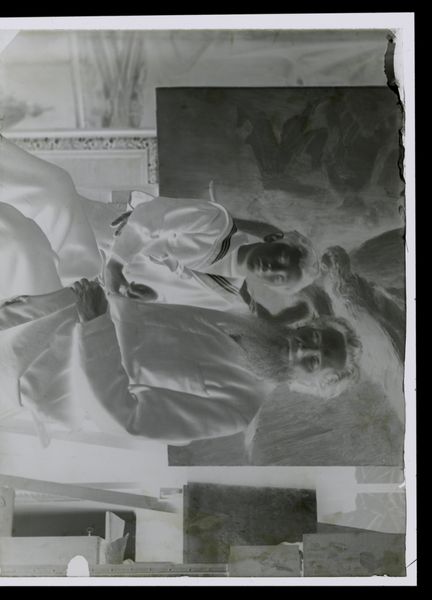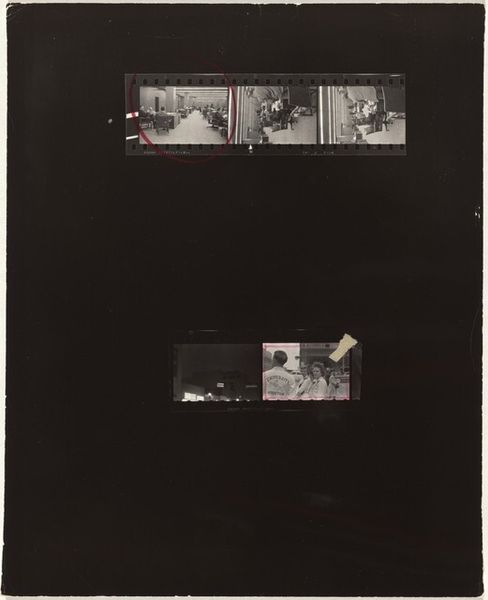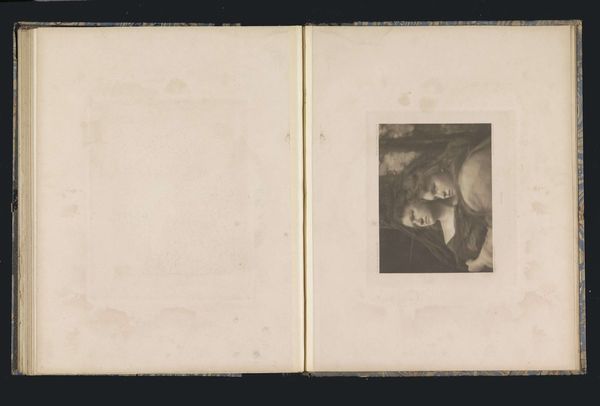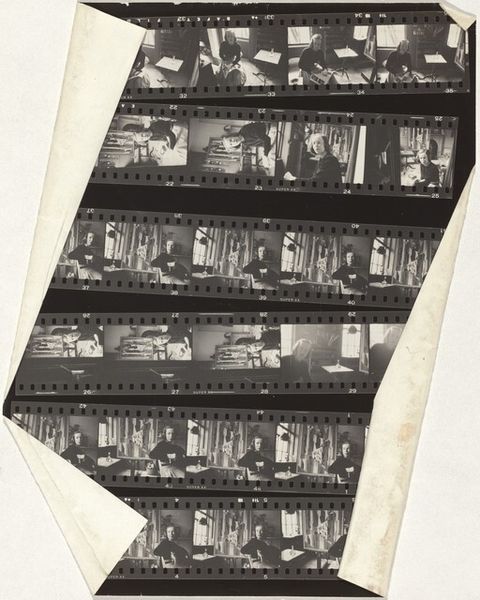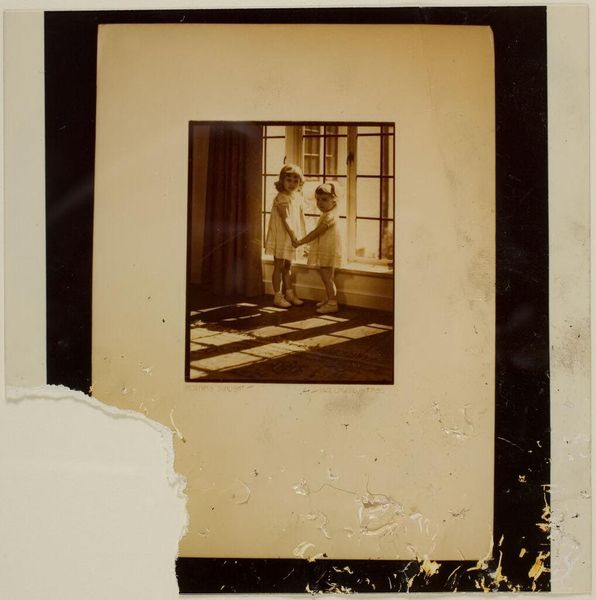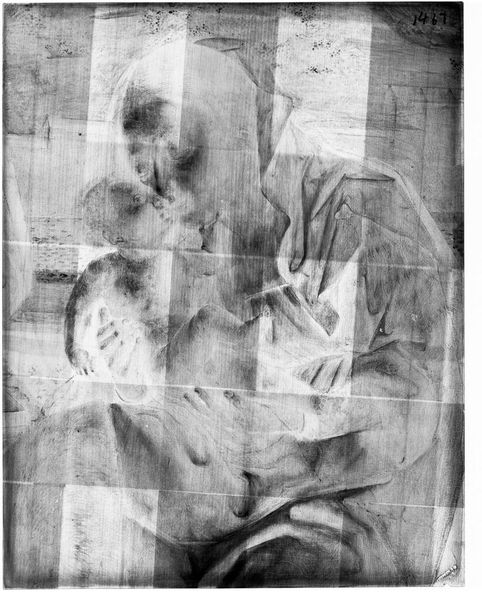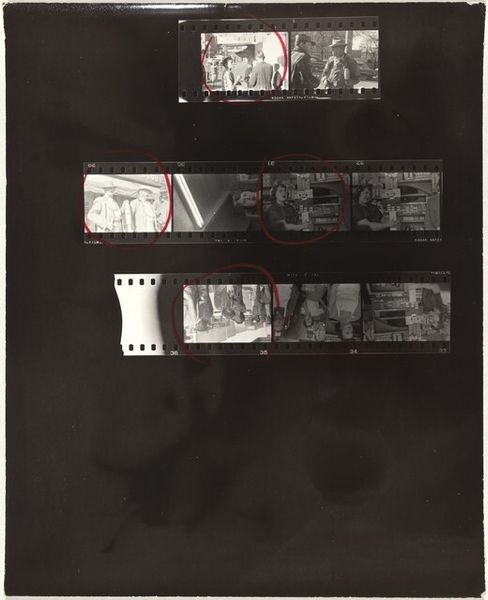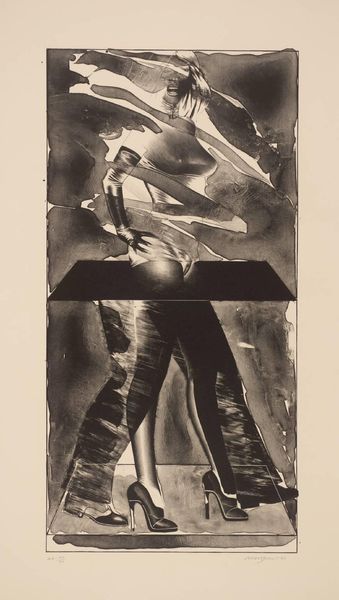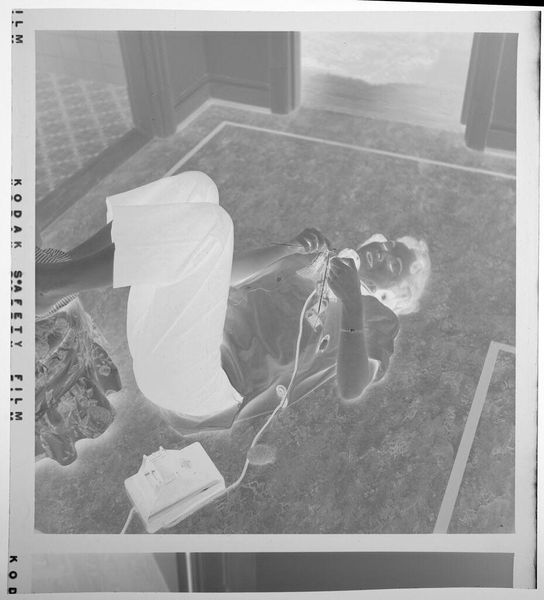
photography
#
street-photography
#
photography
#
genre-painting
Dimensions: sheet: 25.2 × 3.5 cm (9 15/16 × 1 3/8 in.)
Copyright: National Gallery of Art: CC0 1.0
Editor: This is an interesting format; it seems like a filmstrip from a photo booth. Robert Frank's "Shoe Shine" depicts exactly that—a shoe shine. I’m struck by the immediacy of it, the raw, almost unpolished feel. It's a series of snapshots rather than a single posed photograph. What's your take on it? Curator: Looking at the filmstrip, I’m immediately drawn to the material reality of photography itself – the celluloid, the chemicals, the darkroom processes that brought this image into being. It begs the question: What were Frank's decisions in choosing this format? This strip is also documenting labor. Not just the act of shining a shoe, but the labor of the photographer. Editor: So, the focus shifts from simply documenting the act to highlighting the means by which that documentation occurs? Curator: Precisely. Think about the choices inherent in using photography to capture what could be perceived as a very common task. Shoe shining involves work, social interactions and exchange of money. Then what is emphasized? How much does it echo the production of photographs itself, involving labour and commercial processes? Editor: That is quite the point. It’s not just what’s being depicted but also how it’s being depicted and, really, the implications behind each element of image creation, film choice and final printing style! Curator: Exactly. It's about peeling back the layers to reveal the often-unseen labour, process and capital that underlies these representations of everyday life. Editor: I appreciate seeing how the everyday production and our perceptions of the final image reflect those dynamics! Curator: Absolutely. By looking at those material aspects of the artistic act, we've found the core meaning of that moment and this photograph.
Comments
No comments
Be the first to comment and join the conversation on the ultimate creative platform.

